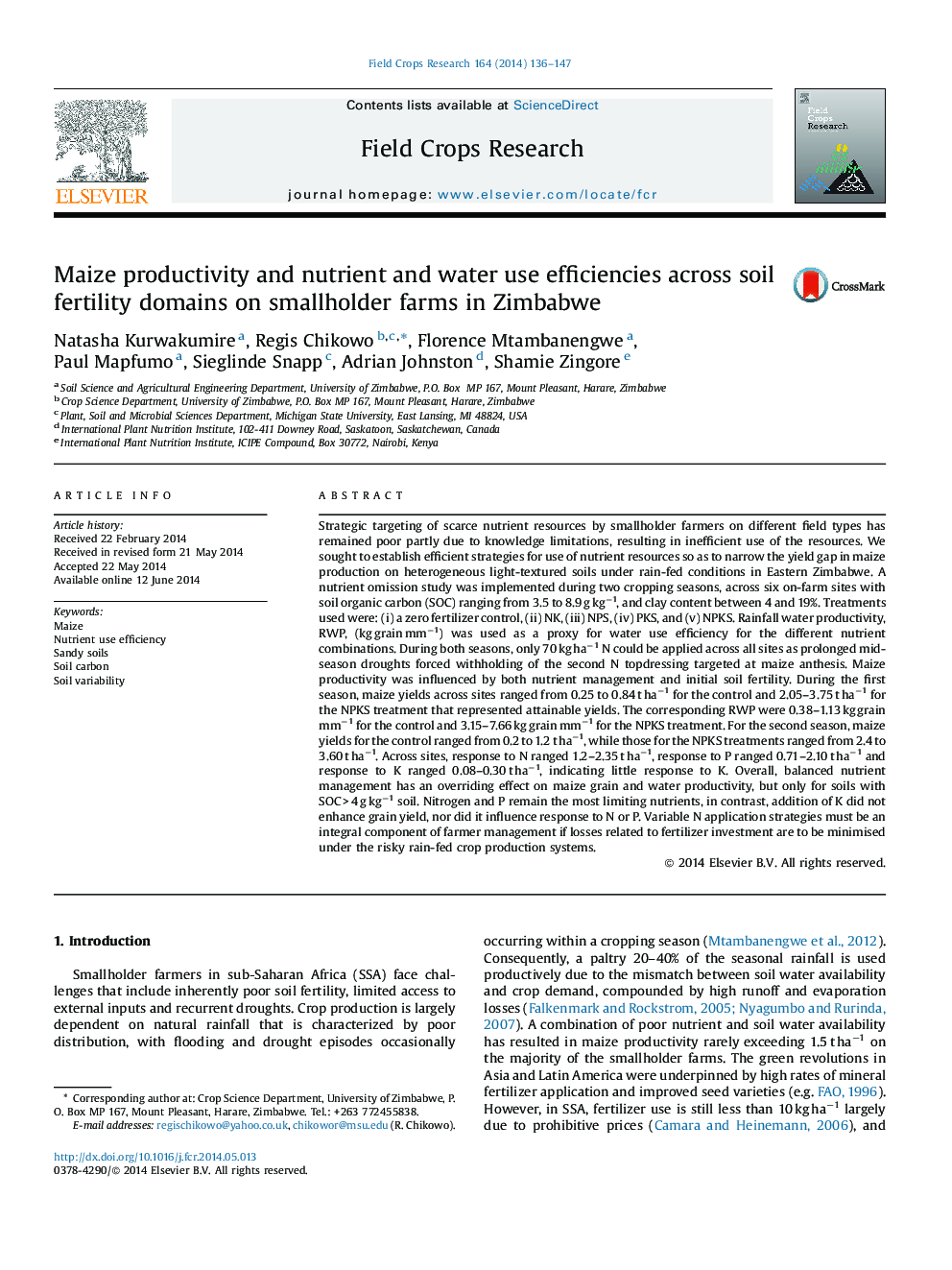| کد مقاله | کد نشریه | سال انتشار | مقاله انگلیسی | نسخه تمام متن |
|---|---|---|---|---|
| 4510094 | 1624699 | 2014 | 12 صفحه PDF | دانلود رایگان |
• Strategic targeting of nutrient resources on farms results in higher fertilizer use efficiency.
• Soils with SOC less than 0.46% are severely constrained by both nitrogen and phosphorus.
• Response to potassium fertilizers is poor even on very sandy soils.
Strategic targeting of scarce nutrient resources by smallholder farmers on different field types has remained poor partly due to knowledge limitations, resulting in inefficient use of the resources. We sought to establish efficient strategies for use of nutrient resources so as to narrow the yield gap in maize production on heterogeneous light-textured soils under rain-fed conditions in Eastern Zimbabwe. A nutrient omission study was implemented during two cropping seasons, across six on-farm sites with soil organic carbon (SOC) ranging from 3.5 to 8.9 g kg−1, and clay content between 4 and 19%. Treatments used were: (i) a zero fertilizer control, (ii) NK, (iii) NPS, (iv) PKS, and (v) NPKS. Rainfall water productivity, RWP, (kg grain mm−1) was used as a proxy for water use efficiency for the different nutrient combinations. During both seasons, only 70 kg ha−1 N could be applied across all sites as prolonged mid-season droughts forced withholding of the second N topdressing targeted at maize anthesis. Maize productivity was influenced by both nutrient management and initial soil fertility. During the first season, maize yields across sites ranged from 0.25 to 0.84 t ha−1 for the control and 2.05–3.75 t ha−1 for the NPKS treatment that represented attainable yields. The corresponding RWP were 0.38–1.13 kg grain mm−1 for the control and 3.15–7.66 kg grain mm−1 for the NPKS treatment. For the second season, maize yields for the control ranged from 0.2 to 1.2 t ha−1, while those for the NPKS treatments ranged from 2.4 to 3.60 t ha−1. Across sites, response to N ranged 1.2–2.35 t ha−1, response to P ranged 0.71–2.10 t ha−1 and response to K ranged 0.08–0.30 t ha−1, indicating little response to K. Overall, balanced nutrient management has an overriding effect on maize grain and water productivity, but only for soils with SOC > 4 g kg−1 soil. Nitrogen and P remain the most limiting nutrients, in contrast, addition of K did not enhance grain yield, nor did it influence response to N or P. Variable N application strategies must be an integral component of farmer management if losses related to fertilizer investment are to be minimised under the risky rain-fed crop production systems.
Journal: Field Crops Research - Volume 164, 1 August 2014, Pages 136–147
